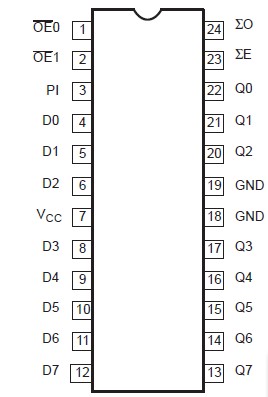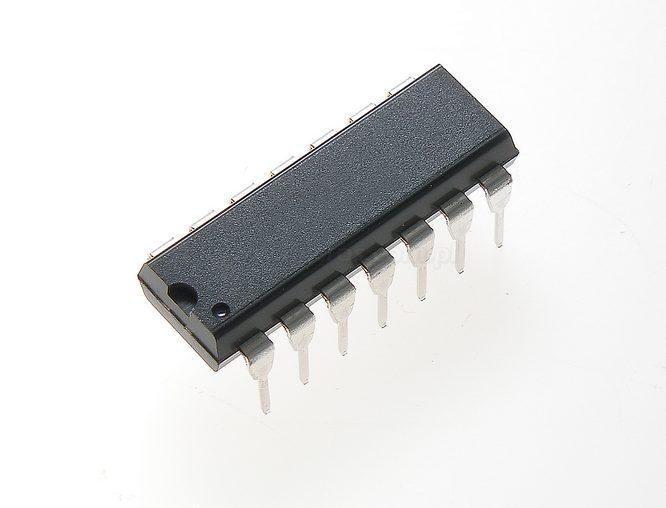Features: • High impedance NPN base inputs for reduced loading (40mA in High and Low states)
• 74F456 combines 74F244 and 74F280A functions in one package
• 74F456 is a center pin version of the 74F656A
• 74F456 Non-Inverting
• 3-State outputs sink 64mA and source 15mA
• 24-pin plastic Slim DIP (300 mil) package
• Broadside pinout simplifies PC board layout
Pinout Specifications
Specifications(Operation beyond the limits set forth in this table may impair the useful life of the device.
Unless otherwise noted these limits are over the operating free-air temperature range.)
|
SYMBOL |
PARAMETER |
RATING |
UNIT |
|
VCC |
Supply voltage |
0.5 to +7.0 |
V |
|
VIN |
Input voltage |
0.5 to +7.0 |
V |
|
IIN |
Input current |
30 to +5 |
mA |
|
VOUT |
Voltage applied to output in High output state |
0.5 to VCC |
V |
|
IOUT |
Current applied to output in Low output state |
128 |
mA |
|
Tamb |
Operating free-air temperature range |
0 to +70 |
°C |
|
Tstg |
Storage temperature range |
65 to +150 |
°C |
DescriptionThe 74F455 and 74F456 are octal buffers and line drivers with parity generation/checking designed to be employed as memory address drivers, clock drivers and bus-oriented transmitters/receivers. These parts include parity generator/checker to improve PC board density.
The 74F456 is octal buffer and line driver with parity generation/checking designed to be employed as memory address driver, clock driver and bus-oriented transmitter/receiver.These parts include parity generator/checker to improve PC board density.
Features of the 74F456 are:(1)high impedance NPN base inputs for reduced loading (40A in High and Low states); (2)74F456 combines 74F244 and 74F280A functions in one package; (3)74F456 is a center pin version of the 74F656A; (4)74F456 Non-Inverting; (5)3-state outputs sink 64mA and source 15mA; (6)24-pin plastic Slim DIP (300 mil) package; (7)broadside pinout simplifies PC board layout.These products are not designed for use in life support appliances, devices or systems where malfunction of these products can reasonably be expected to result in personal injury. Philips Semiconductors customers using or selling these products for use in such applications do so at their own risk and agree to fully indemnify Philips Semiconductors for any damages resulting from such application.
The absolute maximum ratings of the 74F456 can be summarized as:(1)supply voltage :-0.5 to +7.0 V; (2)input voltage:-0.5 to +7.0 V; (3)input current:-30 to +5 mW; (4)voltage applied to output in High output state:0.5 to +Vcc V;(5)current applied to output in Low output state :128 mA.Not more than one output should be shorted at a time. For testing Ios, the use of high-speed test apparatus and/or sample-and-hold techniques are preferable in order to minimize internal heating and more accurately reflect operational values. Otherwise, prolonged shorting of a High output may raise the chip temperature well above normal and thereby cause invalid readings in other parameter tests. In any sequence of parameter tests, Ios tests should be performed last.This data sheet contains preliminary data, and supplementary data of the 74F456 will be published at a later date.Philips Semiconductors reserves the right to make chages at any time without notice in order to improve design and supply the best possible product.

 74F456 Data Sheet
74F456 Data Sheet








